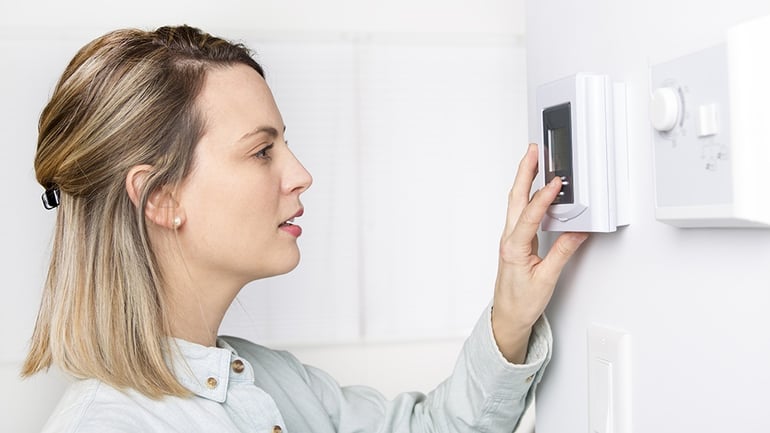
Why is it that your home’s air conditioner never starts when you need it most? Say goodbye to plug-in fans and open windows for good with Warner Service’s comprehensive list of reasons as to why your air conditioner isn’t turning on:
- It’s not receiving power. The simplest answer is that the unit was accidentally unplugged. It could also be a more serious problem like a defective breaker or burned/disconnected wire. If you find the latter problem, call an HVAC expert.
- Your air ducts are leaking. This is the biggest waste of energy because it exhausts cool air and brings debris into your home.
- Your evaporator or condenser is dirty. If this appliance shuts off repeatedly and/or inadequately cools your home, your evaporator is dirty. Carefully clean it then let the A/C run for a few hours. If it’s running, but there’s no cool air, check the condenser for blockage or dirt. Remove the debris and try again.
- The weather is too hot. You can't function when the weather is more than 100 degrees Fahrenheit, and neither can your air conditioner. On those days, you may not be able to get to 62 degrees Fahrenheit in your home no matter how hard you try.
- There’s a faulty part. Whether it’s the motor, transformer, or capacitor, some parts of your unit are on their final days. If you suspect that you need a replacement part or a new unit, contact a local professional for an estimate.
- It's just old. Even the best A/C units don’t last forever. After 7 to 10 years, it’s time to get a new one.
- The wires have been chewed through. Some critters use an outdoor unit’s low-voltage wires for snacks, which means that your A/C has no circuit.
- The circuit breaker tripped, or the fuse blew. This is a common occurrence after a power surge from a thunderstorm. Thankfully, you can turn the circuit breaker back on to get the unit running again. If your air conditioning doesn’t come on after a few tries or it trips again, call the pros.
- Your A/C’s outside fan or thermal expansion valve (TXV) stopped working. The former piece is responsible for the flow between outside air and your home while the TXV acts as needle that allows refrigerant to pass. If neither part is moving, neither is the flow of your A/C.
- The air filter is clogged. You should replace the air filter twice monthly to avoid poor indoor air quality. Clogged filters reduce airflow over the evaporator coil, causing the unit to ice up or shut down and go into lockout mode. For an easy DIY solution, simply hit “reset” on the outdoor unit until it’s functioning again.
- The thermostat is off. Programmable thermostats should be set to “cool” then adjust the temperature to at least 5 degrees Fahrenheit below the indoor temperature. This will help your air conditioner run at an optimal level.
- Your air conditioning has dirty coils. A/C units suck heat out of the air in order to cool it. They don’t add coolness to the air. Dirty coils bring bacteria into your home, and build slime, which can’t absorb the heat.
- The condensate drain is obstructed. Algae clogs the condensate drain line, creating a water overflow from the cold evaporator coil that could leak into your unit. Most drain float switches will turn on to prevent any water damage, but you can follow these instructions for immediate results:
- Connect the hose of a wet/dry vacuum to the condensate drain line (usually a ¾ -inch PVC pipe near the outdoor unit).
- Turn on the vacuum to begin sucking.
- Wait approximately 3 minutes to clear the drain line.
- Your garden’s in the way. Extensive vegetation, grass, leaves, and other natural debris get sucked into A/C vents causing damage to the capacitor.
- Your air conditioner isn’t the right size. You need the right size unit for your home because incorrectly sized units could cause inadequate home cooling. Talk to a professional about which size is right for your home.
If your A/C is giving you a hard time this summer, check to see if it’s one of these few reasons. If nothing’s adding up, call us for a check-up. You can also download our HVAC Maintenance Checklist to keep your home running smooth year-round:


